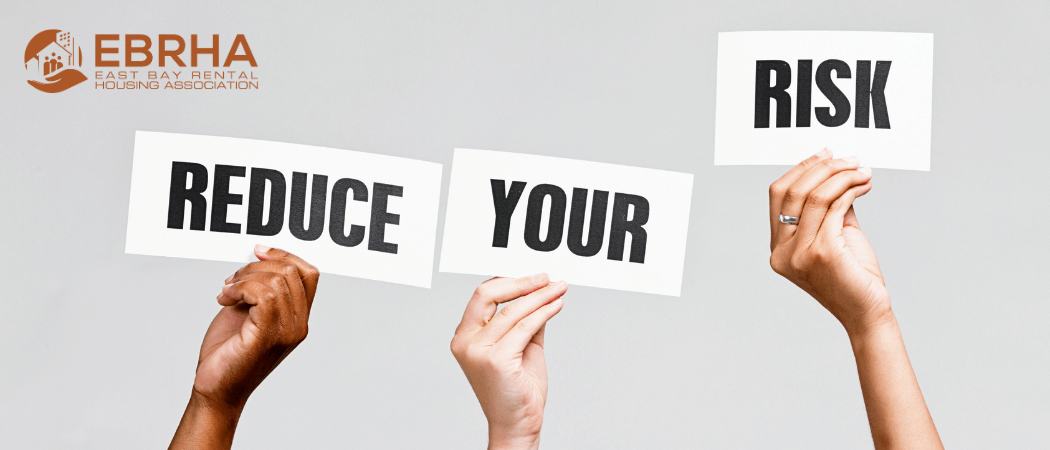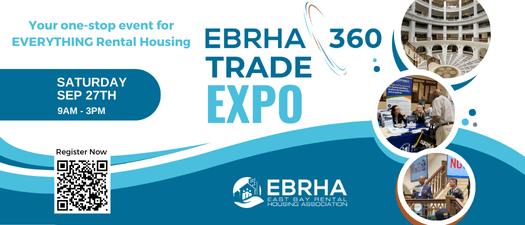Risk-Proofing Your Rental Property: Smarter Systems, Safer Buildings

By Dan Lieberman
As an owner of a small or midsized rental property, you already know that you are subject to a myriad of risks. Unfortunately, most do not come with flashing warning lights. They usually creep up on you: some moisture build-up in your bathrooms from renters not opening a window or turning on the vent fan, or perhaps a dark area you’re unaware of until an incident occurs.
Most of these issues start small but can easily be prevented just by taking some proactive steps. This article explores some smart, low-cost risk-mitigation strategies that go beyond insurance policies. From preventing water damage and mold to improving lighting and renter safety, these economical ideas will help you run a safer, more efficient rental operation while decreasing your liability exposure.
RETHINK YOUR INSPECTIONS
Rather than doing ‘Annual Building Inspections’ that most residents find intrusive, consider implementing “Comfort and Safety Checks” that emphasize prevention and resident benefits rather than reaction. These inspections should focus on common problem areas such as:
-
Bubbling paint or soft areas near tubs and showers (this can be a sign of hidden leaks).
-
Loose toilets or soft floors near wet areas. Again, these are signs of leaks and much cheaper to fix if caught early. Replacing a $2 wax ring on a toilet can save you hundreds of dollars in dry rot repairs.
-
Gaps at the top of door frames or cracks where walls meet ceilings. These can indicate subtle foundation shifting. Sticky doors and widening gaps are early warning signals.
-
Water stains on window sills or on drywall below windows. These are signs of leaks, usually from rain.
-
Insect wings or small piles of sawdust near baseboards or under sinks. This is a possible sign of termite activity.
In addition, check the condition of appliances, make sure your HVAC is working properly, and focus on common problems so you can catch them early. Prior to the inspections, we request our residents let us know if they are having any problems. Many times, these provide clues to bigger issues at the property.
SMART UPGRADES FOR WATER AND MOLD PREVENTION IN BATHROOMS
Bathrooms are a common area of property damage and for mold claims. Here are a few ways to get ahead of the most common issues:
-
Humidity-sensing exhaust fans. You never need to rely on renters turning on the bath fan. These units kick on automatically when humidity hits a certain level, ensuring proper ventilation. I’d recommend installing one even if you have a window in the bathroom, as most residents do not open their window in the winter, negating the benefit.
-
Apply grout sealant. Every two years or so, applying a coat of sealant can extend the life of tiled showers and floors and reduce the risk of mold build up.
-
Install flexible braided supply lines. These are less likely to crack or burst than older, rigid or plastic lines. Also, they can absorb minor movement (like a renter bumping them under the vanity). At only $6-$10 each, they are a cheap upgrade with a major payoff in leak prevention.
And don’t overlook simple items like providing a flyer to your residents on simple healthy home tips they may not know, like placing the shower curtain inside the tub or running the bath fan for 15-20 minutes after they’ve showered to reduce moisture buildup.
LIGHT IT RIGHT
Poor lighting isn’t just uninviting, it’s a potential liability. Lighting is one of the most underrated tools for both risk reduction and renter experience. Many owners simply switch to LED bulbs and feel they’ve done an upgrade, but there are deeper, smarter lighting enhancements to consider:
-
Motion activated lighting in potential problem zones: There are many areas that are not used that frequently and may not require lighting to be on all of the time. Side yards, rear entrances, trash enclosures, and storage areas are just some examples. Motion activated lights not only improve visibility, but also deter loitering, illegal dumping, and trespassers.
-
Glow-in-the-dark tape or strips. These are especially useful for areas with slight step-ups or elevation changes or on exterior wood stairs. Essentially, they charge during the day and remain visible for hours after dark. Also, a good safety net if a bulb burns out of power is lost.
-
Solar path lights. These are great for buildings with no existing conduit or access to outdoor power near walkways, garden paths, or detached garages. No wiring necessary. Use the higher end models, as the cheap plastic ones tend to fade and fail quickly.
And remember to do a “night walk” at your property several times per year to check for bulb outages, sensor malfunctions and dark zones. A well-lit property is not only safer, it feels better maintained and helps retain residents.
PERFORM WATER WALK
Similar to doing a ‘night walk’, the best way to catch potential water issues is to walk your property while it’s raining. Instead of just a visual roof check, you’ll catch:
-
Gutter overflows
-
Where water pools near the foundation
-
Where water runs across or ponds at walkways
Do this once a year and you’ll likely catch small grading or gutter issues before they become potential foundation problems or trip hazards.
FINAL THOUGHTS
The best protection is good renter communication. You want your residents to contact you when they see something off (such as a burned-out light bulb). You can’t be at the property all the time, so building good relations with your residents is essential.
Too many owners rely on insurance as their risk mitigation strategy. But, with insurance so hard to get these days and the cost skyrocketing, you only want to use your insurance when there’s potentially a large claim.
Strategic upgrades, regular inspections, and a simple flyer that encourages residents to do the right thing will not only reduce repair costs and potential claims, they can also increase resident satisfaction and retention.
Dan Lieberman is an EBRHA member who actively contributes to the association.

